3D-shapes
A three-dimensional (3D) shape is a shape or geometric figure that has length, width and height. When a 3D shape is closed, its volume and surface area can be determined. Below are a few examples of 3D shapes.

Types of 3D shapes
3D shapes can be classified in many different ways, such as polyhedra (plural for polyhedron) and non-polyhedra.
Polyhedra
A polyhedron is a 3D shape whose faces are polygons. The word polyhedron has Greek origins, meaning many faces. Prisms and pyramids are two examples of polyhedra that are commonly studied in geometry.
Prism
Prisms are polyhedra that have two congruent faces, called bases, that lie in parallel planes. The other faces (the sides that are not bases) are parallelograms, rectangles, or squares. A prism is typically named based on the shape of its polygonal bases. Below are three examples.
| Rectangular prism | Hexagonal prism | Triangular prism |
|---|---|---|
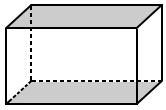 |
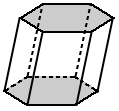 |
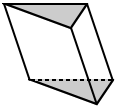 |
| The bases are rectangles. | The bases are hexagons. | The bases are triangles. |
Pyramids
Pyramids are polyhedra that contain only one polygonal base; all the other faces are triangles. The triangular faces (aside from the base of a triangular pyramid) all share a common vertex called the apex. Like a prism, a pyramid is also typically named based on the shape of its polygonal base. Below are three examples of pyramids with different bases.
| Square pyramid | Triangular pyramid | Hexagonal pyramid |
|---|---|---|
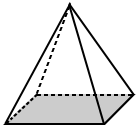 |
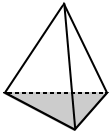 |
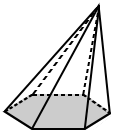 |
| The base is a square. | The base is a triangle. | The base is a hexagon. |
General polyhedra
Polyhedra are 3D shapes that can take on many other shapes. Below are two examples.
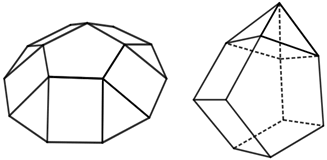
Non-polyhedra
A non-polyhedron is a space figure that has at least one face or component that is not a polygon. In geometry, three types of non-polyhedra that are commonly studied are cylinders, cones, and spheres.
Cylinder
A cylinder is a 3D shape that is made up of two flat circular bases and a curved surface that "wraps" around the bases. The following are two examples.

Cone
A cone is a 3D shape that is made up of a circular base that tapers to a point. The following are two examples.

Sphere
A sphere is a 3D shape that has a round shape. All points on the surface of a sphere are equidistant from a point called the center.

Did you know?
While we may consider the Earth to be spherical in shape, it does not have perfect symmetry. The radius of Earth at the equator is slightly larger than the polar radius with a difference of around 22 km (13 miles). The difference is believed to be caused by the spinning of the Earth. Therefore, the Earth has a flattened out sphere shape, called oblate spheroid.
